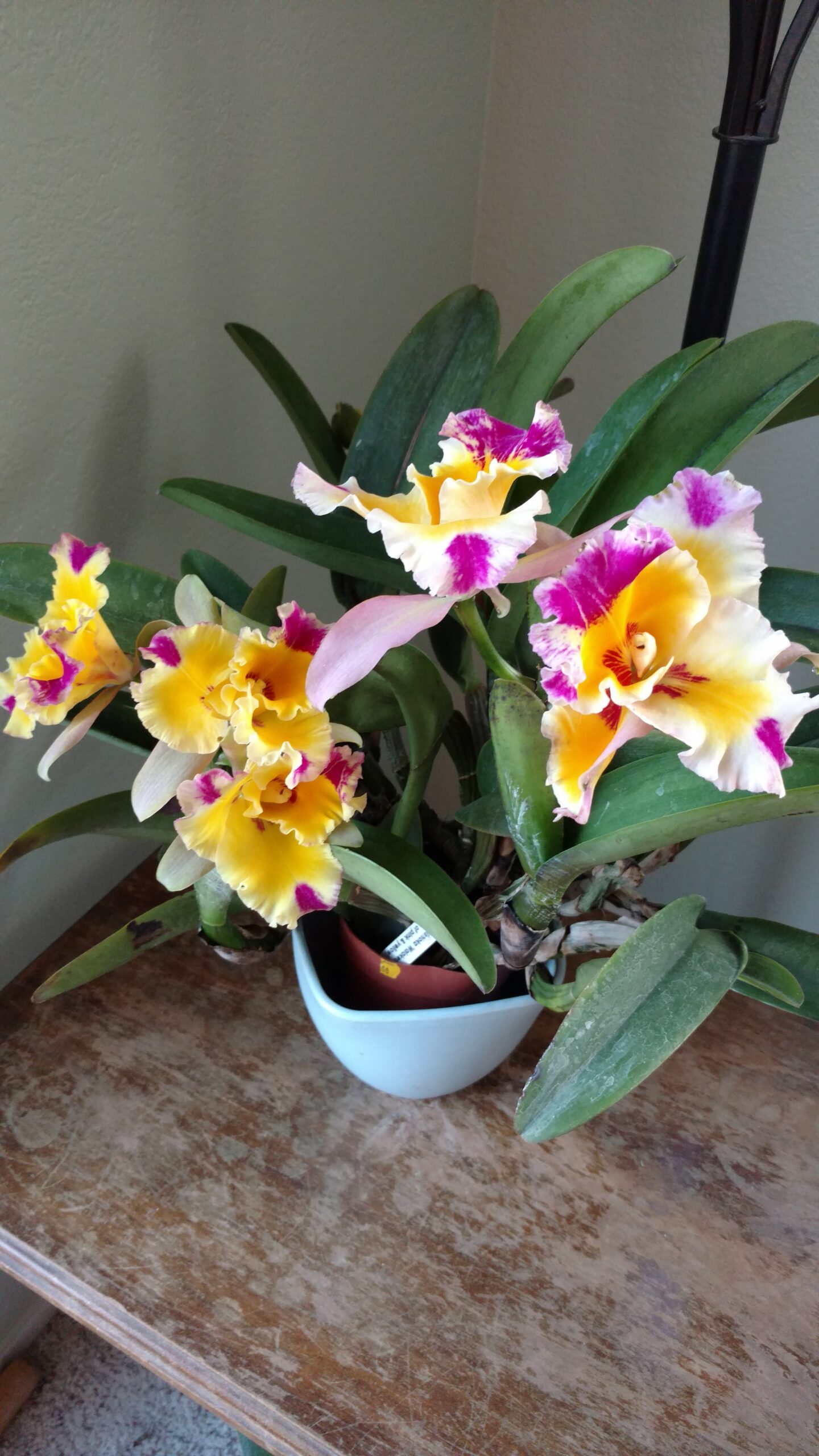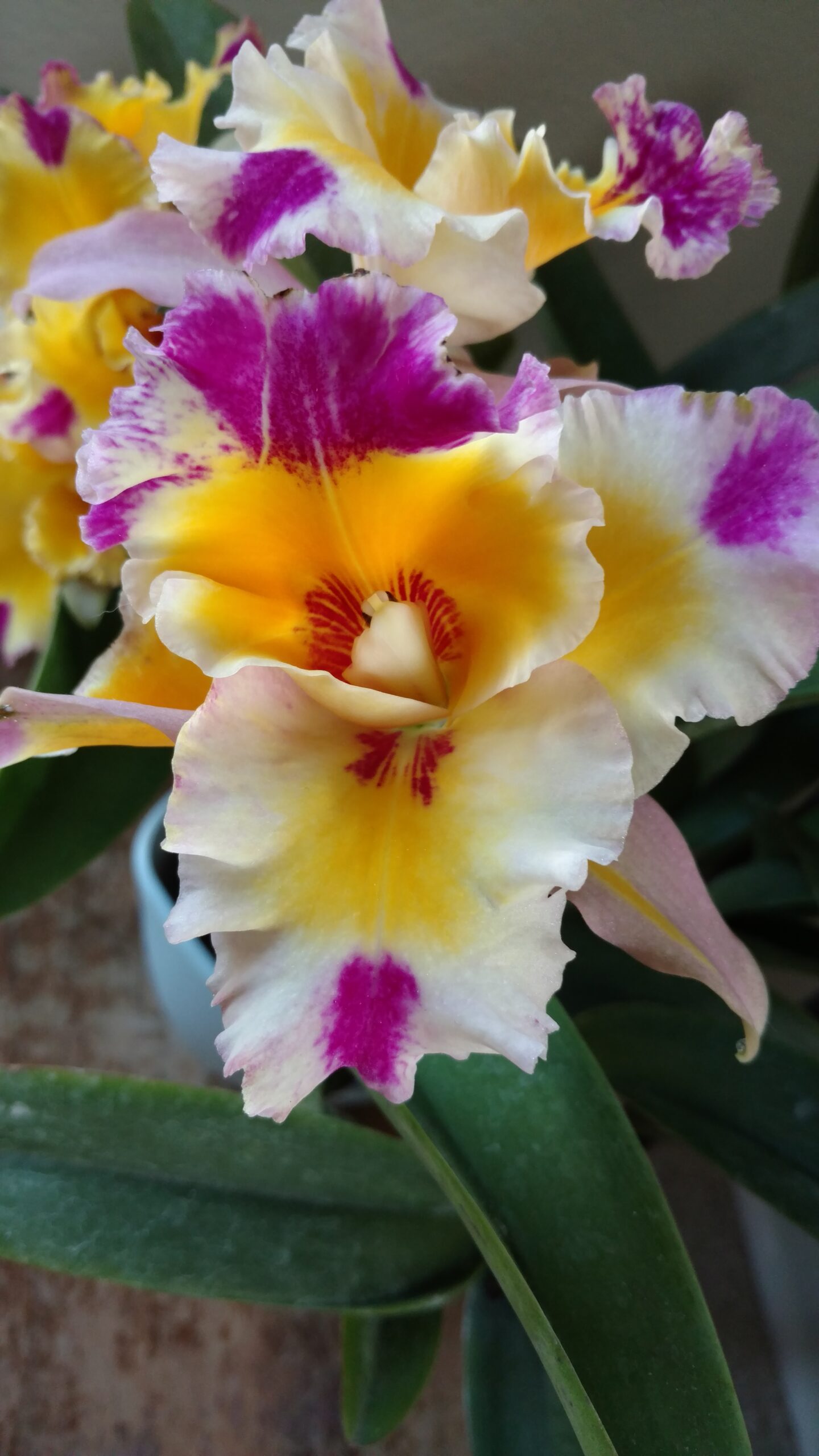

Cattleya orchids, sometimes known as queen of the orchids, are native to tropical America. Best known for their incredible array of flowers, the blossom size and number of flowers vary by variety. In their native habitat, they grow in trees without soil supporting their roots. Plants with this growth habit are called epiphytes. All cattleyas have pseudobulbs, or thickened stems, which store water and bear leathery leaves.
Contrary to popular belief, orchids can be grown successfully in Colorado. Cattleya orchids perform best in very high light and need a potting mix comprised of redwood bark chips, coarse charcoal or perlite, or other commercially available orchid mix. Flowers will not form if the plant does not receive enough light. Cattleyas bloom only once a year, but the season of bloom varies by species or hybrid.
They grow well in typical household temperatures, about 65 to 70 degrees Fahrenheit during the day and 58 to 60 degrees at night. These plants will thrive in 50 to 80 percent relative humidity. You can increase humidity with a room humidifier or by placing the orchid pot on a tray filled with pebbles and water. Keep the water level in the tray below the bottom of the pot to prevent water wicking into the pot which, over time, may lead to root rot.
Use a commercial, water-soluble orchid fertilizer every month or a 30-10-10 formulation for plants grown in pure bark and a 20-20-20 formulation for plants in all other mixes. Repot orchids every two to three years when new growth begins.
Cattleyas occasionally attract pests, including mealybugs and scale insects. They are also susceptible to viral infections and root rot.
For “Viruses in plants” refer to message number 1443.
For more information, see the following Planttalk Colorado™ video(s).
For more information, see the following Colorado State University Extension fact sheet(s).
- Insect Control: Soaps and Detergents
- Insect Control: Horticultural Oils
- Greenhouse Plant Viruses (TSWV/INSV)



